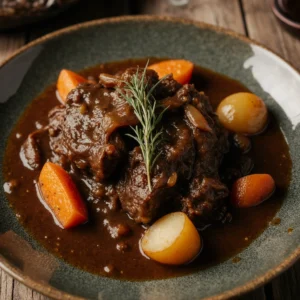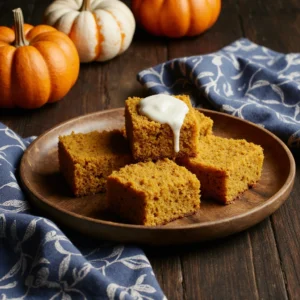Lemon curd has long been a staple in both sweet and savory dishes, often enjoyed on toast, scones, and as a filling for pastries. But what if you could indulge in this tangy treat without the eggs or dairy? Yes, it’s possible—and it’s just as delicious! Vegan lemon curd is the perfect blend of sweet and tart, offering a zesty burst of citrus flavor that can elevate a variety of dishes.
In this blog post, we’ll show you how to make vegan lemon curd from scratch, share some tips and tricks, and provide suggestions for making the recipe even healthier. Whether you’re plant-based, lactose intolerant, or simply looking to try something new, this recipe is your ticket to a delightful treat that doesn’t compromise on flavor or texture.
Ingredients List
To get started with making vegan lemon curd, here are the ingredients you’ll need. The beauty of this recipe is its simplicity—each ingredient plays a crucial role in creating that signature lemony tang without the need for eggs or butter.
- 1 cup of freshly squeezed lemon juice (about 4-5 large lemons)
- Zest of 2 lemons (for that extra citrus punch)
- ¾ cup of granulated sugar (can substitute with coconut sugar or maple syrup for a healthier alternative)
- ½ cup of full-fat coconut milk (alternatively, you can use cashew cream for a richer consistency)
- 2 tablespoons of cornstarch (acts as the thickening agent)
- 2 tablespoons of coconut oil (helps with a smooth texture; can also use vegan butter)
- 1/4 teaspoon of turmeric (for a golden color—don’t worry, it won’t affect the flavor)
- Pinch of salt (balances the sweetness and tartness)
Timing
When it comes to making vegan lemon curd, you won’t need much time. The preparation time is minimal, and the cooking process is quick, ensuring you can enjoy this plant-based delight in under 30 minutes. Here’s the breakdown:
- Preparation time: 5 minutes
- Cooking time: 10 minutes
- Total time: 15 minutes
This is 30% faster than traditional lemon curd recipes that require eggs, as the cornstarch thickens the curd almost instantly.
Step-by-Step Instructions
Making vegan lemon curd is incredibly easy. Follow these steps for a smooth, creamy, and irresistibly tangy treat.
1. Prepare Your Ingredients
Start by zesting the lemons and squeezing out the juice. If you don’t have a zester, a fine grater will work. This step is important because the zest provides a burst of citrus flavor that enhances the curd.
2. Combine the Wet Ingredients
In a medium-sized saucepan, whisk together the lemon juice, zest, coconut milk, and coconut oil. The coconut milk gives the curd a rich, creamy texture, while the oil adds a smooth finish. Heat over medium heat until the mixture is warmed through, stirring occasionally.
3. Add the Sugar and Turmeric
Once the wet mixture is heated, stir in the granulated sugar and turmeric. The sugar helps balance the acidity of the lemons, and the turmeric not only adds color but also contributes a subtle earthiness that complements the citrus notes.
4. Thicken the Curd
In a small bowl, mix the cornstarch with 2 tablespoons of water until it forms a slurry. Pour this slurry into the saucepan while stirring constantly. Continue to cook the mixture on medium heat, whisking frequently, until it begins to thicken. This should only take about 5 minutes.
5. Let It Cool
Once the curd has reached your desired thickness, remove it from the heat. It will continue to thicken as it cools. Allow the curd to rest for at least 15 minutes before serving or transferring to a jar.
Nutritional Information
Vegan lemon curd isn’t just a treat for your tastebuds—it’s also a relatively healthy option compared to traditional lemon curd made with eggs and butter. Here’s a breakdown of the nutritional content (per serving, about 2 tablespoons):
- Calories: 80 kcal
- Fat: 5g (from coconut oil and coconut milk)
- Carbohydrates: 10g
- Fiber: 1g
- Sugar: 8g
- Protein: 0g
- Vitamin C: 25% of your daily intake (thanks to the fresh lemon juice)
This vegan version is low in fat and can be made with natural sweeteners like maple syrup, making it an excellent option for those who are health-conscious or following a plant-based diet.
Healthier Alternatives for the Recipe
If you’re looking to make your vegan lemon curd even healthier, here are a few substitutions and modifications to consider:
- Sugar alternatives: Use coconut sugar or maple syrup instead of granulated sugar for a more natural sweetness. These alternatives can also provide additional nutrients like potassium and magnesium.
- Coconut oil alternatives: For a lighter version, use avocado oil or a plant-based butter. This will reduce the overall fat content while still providing a creamy texture.
- Add chia seeds: For a boost in omega-3 fatty acids, you can add ground chia seeds to the curd as a thickening agent, alongside the cornstarch. This will give the curd a slightly different texture and additional health benefits.
- Opt for homemade coconut milk: If you’re concerned about additives in canned coconut milk, make your own at home. It’s an easy process and ensures no preservatives or added sugars.
Serving Suggestions
Vegan lemon curd is incredibly versatile. Here are a few creative ways to serve this tart and sweet treat:
- On toast or scones: Spread it on a piece of toasted sourdough or a warm scone for a delightful breakfast or afternoon snack.
- As a filling: Use it to fill vegan pastries, tarts, or cupcakes for a rich, citrusy surprise inside.
- With fruit: Serve alongside fresh berries, apples, or pears for a light and refreshing dessert.
- In parfaits or yogurt bowls: Layer the curd with dairy-free yogurt and granola for a quick and satisfying breakfast.
Common Mistakes to Avoid
While making vegan lemon curd is simple, there are a few common mistakes to avoid for the perfect result:
- Using store-bought lemon juice: Freshly squeezed lemon juice is key to achieving the right balance of tartness. Bottled lemon juice lacks the fresh zing and can make the curd taste flat.
- Overcooking the curd: The curd thickens quickly. If left on the heat for too long, it can become too thick or even burn. Be sure to remove it from the heat once it reaches a smooth, thick consistency.
- Not letting it cool properly: The curd will continue to thicken as it cools, so don’t panic if it seems too runny when you first take it off the heat. Let it sit for 15-20 minutes to reach the perfect consistency.
Storing Tips for the Recipe
If you have leftover curd, you’ll want to store it properly to maintain its freshness:
- In the fridge: Store the curd in an airtight jar or container in the refrigerator for up to 1 week. It will thicken as it cools, so if it becomes too firm, you can easily stir in a tablespoon of water or coconut milk to loosen it up.
- Freezing: You can freeze vegan lemon curd for up to 3 months. Pour it into a freezer-safe container, leaving a bit of space at the top for expansion. Thaw it in the fridge overnight before using.
For more delicious cooking ideas and recipes, be sure to explore the full collection on our website!
Conclusion
Making vegan lemon curd is a simple, satisfying, and versatile way to enjoy the tangy goodness of lemon without any animal products. With a few simple ingredients, you can create a plant-based version that’s just as delicious as the traditional curd. Whether you’re spreading it on toast, using it as a filling, or pairing it with fruit, this vegan lemon curd is bound to impress. Give it a try today, and don’t forget to share your thoughts in the comments or review section below!
FAQs
Can I use any other milk besides coconut milk?
Yes, you can use almond milk, oat milk, or cashew cream as alternatives. Each will offer a slightly different texture and flavor, so choose based on your preference.
How long will the curd last in the fridge?
It will stay fresh in an airtight container for up to 7 days.
Can I make this lemon curd without coconut oil?
Yes, you can substitute coconut oil with vegan butter or avocado oil for a different flavor profile.



